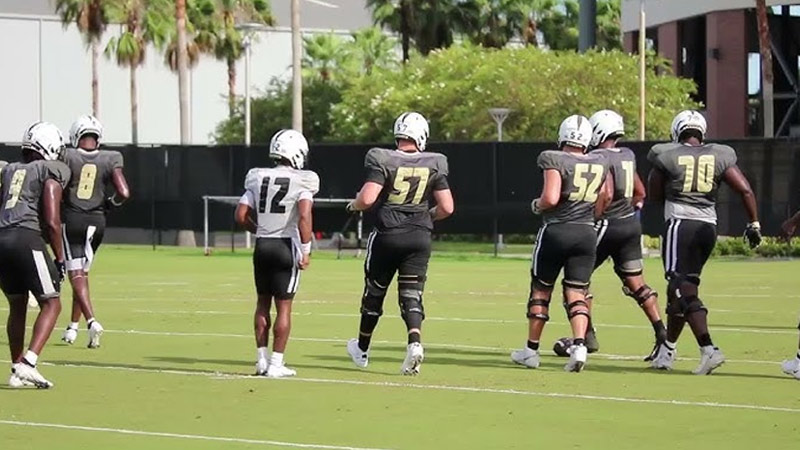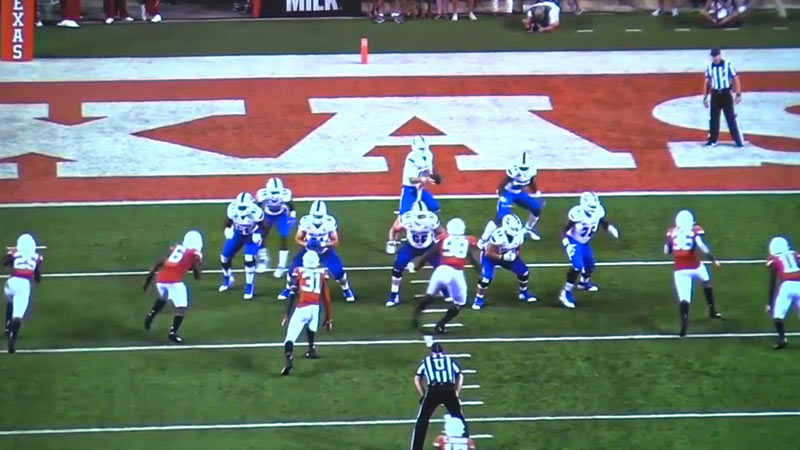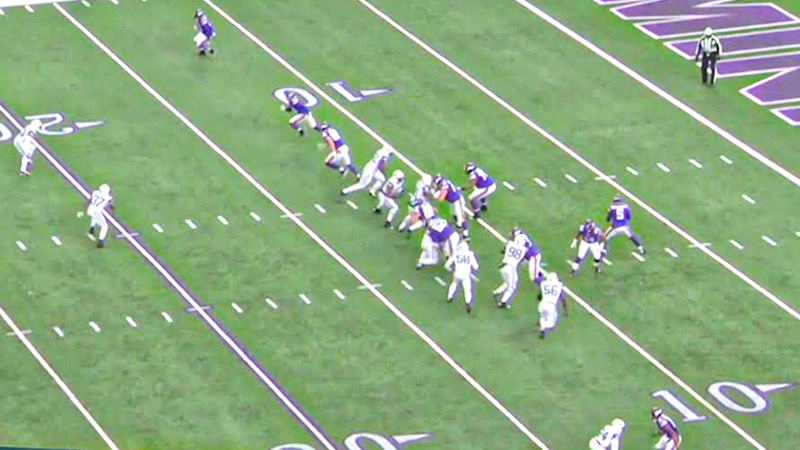In the realm of American football, where intricate tactics and strategic plays shape the outcome of every game, few plays are as deceptive and impactful as the football screen pass.
This tactical maneuver, designed to exploit defensive aggressiveness and create open-field opportunities, has the potential to sway the momentum of a match and leave spectators in awe.
In this comprehensive guide, we delve into the nuances of the football screen pass, exploring its mechanics, strategic applications, and the profound impact it can have on the gridiron battlefield.
What Is a Football Screen Pass?
A football screen pass is a deceptive offensive play in American football, strategically designed to exploit the defensive team’s aggressive pass rush. It begins with the quarterback dropping back as if preparing for a long downfield pass.
This tempts the defensive players to rush forward, aiming to pressure the quarterback and disrupt the anticipated pass.
However, as the defensive players commit to the pass rush, the offensive linemen release from their blocking positions and move downfield to form a barrier of blocks for a designated skilled player positioned behind the line of scrimmage.
Simultaneously, the quarterback quickly delivers a short, usually lateral pass to the skilled player. This allows the skilled player to receive the ball with open space and the potential to gain significant yardage as they exploit the momentarily compromised defensive positioning.
The screen pass capitalizes on the defense’s aggression, utilizing their momentum against them. It relies on precise timing and execution between the quarterback, offensive linemen, and skilled player to achieve a successful offensive gain.
Bubble Screen Pass in Football
A bubble screen pass is a specific type of football offensive play that aims to create a quick and short passing option for the quarterback while utilizing the blocking of wide receivers.
In this play, the quarterback takes the snap and immediately throws a short lateral pass to a wide receiver positioned near the line of scrimmage.
The key feature of the bubble screen is that the receiver catching the ball has one or two blockers ahead of them, usually other wide receivers or offensive linemen, who create a “bubble” of protection.
Upon receiving the pass, the targeted receiver has the option to quickly advance downfield behind their blockers or make lateral movements to find an opening in the defense.
The success of the bubble screen relies on the receiver’s agility, the timing of the pass, and the effectiveness of the blocking setup.
Halfback Screen Pass in Football
A halfback screen pass is a strategic football offensive play designed to involve the running back (halfback) as the primary receiver in a passing play.
This play aims to catch the opposing defense off guard by creating a scenario where the defense focuses on rushing the quarterback while the halfback positions themselves for a short, high-percentage pass behind the line of scrimmage.
In a halfback screen pass, the offensive line initially sets up as if they are pass-blocking to create a passing pocket for the quarterback. Meanwhile, the halfback subtly drifts away from the line of scrimmage, usually to the outside or behind the offensive linemen.
As the defensive players rush the quarterback, the quarterback quickly throws a short lateral or backward pass to the halfback.
The offensive linemen then transition from pass blocking to becoming blockers for the halfback, who has now become the ball carrier. The halfback can use the blocking to create space and potentially gain significant yardage after the catch.
Strategies for Football Screen Pass

Here are the points that help you learn the strategies for a Football screen pass.
Timing and Execution
The key to a successful screen pass is precise timing and flawless execution.
The offensive linemen must hold their blocks momentarily to create the illusion of a traditional passing play before releasing to block downfield, while the intended receiver (running back or wide receiver) needs to position themselves correctly to receive the ball.
Misdirection and Deception
Incorporate pre-snap motion or shifts to confuse the defense and draw their attention away from the screen pass set up.
Creating the illusion of a different play can freeze defenders and provide the necessary split-second advantage for the screen to develop.
Blocker Assignments
Assign specific roles to offensive linemen and other potential blockers (e.g., wide receivers).
Effective communication and understanding of who blocks who are crucial. Properly coordinated blocking creates clear paths for the ball carrier and prevents defenders from disrupting the play.
Backfield Movement
Vary the positioning of the ball carrier (halfback or wide receiver) in the backfield before the snap. This can help disguise the screenplay and make it more difficult for the defense to anticipate the direction of the pass.
Quarterback’s Decision-Making
Train the quarterback to read the defense and make quick decisions. The quarterback must assess whether the screen pass is viable based on the defensive alignment, rush intensity, and positioning of the intended receiver and blockers.
Yards After Catch
Emphasize the ball carrier’s ability to quickly assess the blocking setup and make decisive moves.
Teach the receiver to follow the blocks, set up defenders, and use their agility to maximize yards gained after catching the screen pass.
Implementing these strategies effectively can turn the screen pass into a potent weapon, allowing the offense to capitalize on defensive aggressiveness and create substantial gains through well-coordinated execution and clever deception.
Impact of Football Screen Pass

The football screen pass can have a significant impact on a game’s dynamics and outcomes, affecting both the offensive and defensive sides. Here are some of the key impacts of the football screen pass:
Exploiting Defensive Aggression
Screen passes are designed to take advantage of an aggressive pass rush by luring defenders upfield, creating openings for the ball carrier. This can neutralize a strong pass rush and force defenses to be more cautious, altering their game plan.
Yards After Catch (YAC)
Successful screen passes often result in substantial yards after the catch. Skilled ball carriers can use their agility, speed, and blockers to turn a short pass into a significant gain, helping to move the chains and gain valuable field positions.
Clock Management
Screen passes can be used as a clock management tool, particularly in late-game situations. By completing short, controlled passes that stay in bounds, the offense can continue to move downfield while using precious seconds off the clock.
Offensive Rhythm
Executing screen passes effectively can help establish an offensive rhythm. Quick, successful passes can boost the quarterback’s confidence and open up opportunities for more complex passing plays down the field.
Defensive Adjustments
Defenses forced to contend with successful screen passes may adjust their strategy by employing zone coverages, dropping more defenders into coverage, or reducing their pass rush intensity. This can create openings for other types of offensive plays.
Momentum Shifts
A well-executed screen pass can serve as a momentum changer, electrifying the offense and the crowd. A big gain on a screen pass can energize the team and put pressure on the opposing defense.
Field Position Advantage
The screen pass can help flip the field position by gaining yards in situations where deep passes might be risky. This is particularly useful when the offense is backed up near their own end zone.
Game Planning
The threat of the screen pass can influence how opposing defenses prepare and adjust during a game. This can impact defensive play-calling, coverage schemes, and personnel decisions.
Balancing the Playbook
Incorporating screen passes into the offensive playbook provides balance and diversity. It prevents the defense from solely focusing on deep passes and running plays, making the offense less predictable.
Third Down Efficiency
Screen passes can be effective on third downs, providing a high-percentage option to move the chains and extend offensive possessions.
A football screen pass is a versatile tool that can disrupt defensive strategies, provide quick gains, and contribute to an effective offensive game plan. Its impact extends beyond individual plays, influencing how both teams strategize and adapt throughout the course of a game.
FAQs
What is a Football Screen Pass?
A football screen pass is a crafty offensive play that disguises itself as a traditional downfield pass, only to pivot and exploit the charging defense.
The quarterback executes a short, often lateral, pass to a designated receiver positioned behind the line of scrimmage.
As this skilled player catches the ball, a phalanx of blockers – often offensive linemen – releases from their positions to pave the way downfield.
How does the Screen Pass Capitalize on Defensive Aggressiveness?
The beauty of the screen pass lies in its ability to turn an aggressive defensive approach into a disadvantage.
As defenders rush to sack the quarterback, they inadvertently create lanes for the ball carrier to exploit. The quarterback’s quick release and well-timed pass capitalize on this aggression, transforming it into an offensive advantage.
What Makes Timing Crucial in Executing a Screen Pass?
Timing is the heartbeat of the football screen pass. The offensive line must maintain their blocks momentarily, while the ball carrier positions themselves for the catch.
The quarterback’s delivery and the ball carrier’s movements must synchronize seamlessly, catching the defense off-guard.
How Can Misdirection Play a Role in the Success of a Screen Pass?
Misdirection is a strategic ally in the screen pass playbook. Pre-snap motion or shifts divert the defense’s attention, creating a temporary illusion that the play is heading elsewhere.
This deception buys precious seconds for the screen to unfold, allowing blockers to set up and the ball carrier to receive the pass unimpeded.
What Impact Does the Screen Pass Have on Defensive Strategy?
The success of the screen pass can force defensive adjustments. Defenses may opt for zone coverages, allocate more defenders to coverage, or temper their pass rush.
This, in turn, opens up opportunities for other offensive plays and can lead to a delicate chess match between offensive and defensive coordinators.
Wrapping Up
In the complex symphony of American football, the screen pass stands as a harmonious blend of deception, timing, and precision. It is a play that transforms defensive aggression into an offensive advantage and has the potential to alter the course of a game.
By mastering the art of the football screen pass, teams can strategically navigate the challenges of the gridiron, showcasing the strategic depth that makes football a captivating and ever-evolving sport.
Hopefully, you’ve got my points. Thank you for your time.







